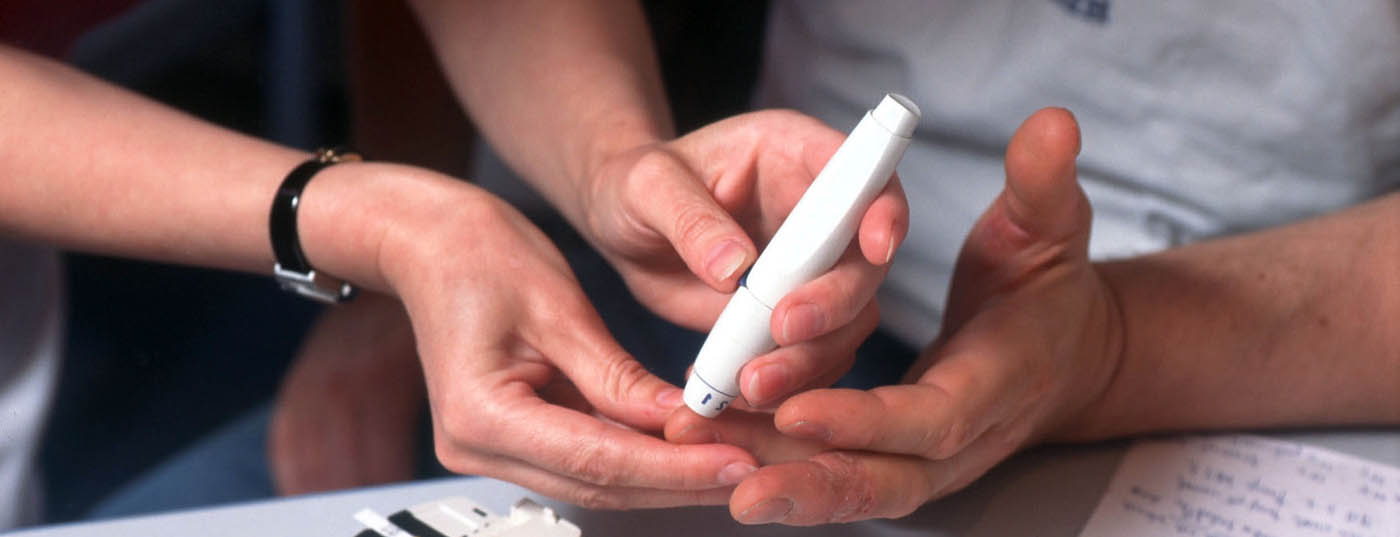Insulin can have a long-term negative effect on weight and lead to tissue damage. The combination with a GLP 1 analog reduces insulin requirements and prevents possible weight gain. Basal insulin causes less hypoglycemia than prandial insulin.
The pathophysiological understanding of type 2 diabetes has experienced remarkable progress in recent years with direct consequences for therapy. In the meantime, new drugs are in use that have a significant influence on insulin treatment. This article revisits the pathophysiology of type 2 diabetes in detail and addresses the clinical consequences.
Pathophysiology of type 2 diabetes
In the pathogenesis of type 2 (as well as type 1) diabetes, the cause is a relative (or absolute) insulin deficiency, which is why hyperglycemia occurs. Therefore, it was previously assumed that insulin substitution was basically the right thing to do.
However, it could be that the decrease in insulin secretion is a physiological response to an oversupply of nutrients. This is because as long as enough insulin is produced and is working, an individual’s weight will increase linearly with the intake of nutrients. It is conceivable that insulin resistance is a protective mechanism against the excessive incorporation of nutrients because insulin-sensitive tissues cannot take up food indefinitely without causing toxicity (lipotoxicity and glucotoxicity) [1]. Similarly, it is known that elevated glucose causes a reversible throttling of insulin production – the phenomenon known as glucotoxicity.
This new way of looking at the development of type 2 diabetes would mean that diabetes is basically a protective mechanism that tries to prevent sensitive organs (especially the heart) from being indefinitely poisoned with food by decreasing insulin production and action. If this mechanism is broken, e.g., with thiazolidinediones, organ failure and, in particular, heart failure will result. This is a known side effect of thiazolidinediones. However, forcing insulin action (whether by exogenous insulin or by sulfonylurea) could also have a negative effect: most certainly on total weight, but possibly also on the pathological development of insulin-sensitive tissue with heart failure and a wide variety of tissue inflammation [2]. Although clinical evidence is still needed for this, the growing body of indirect evidence clearly supports it.
The therapeutic dilemma is that conventional therapies with insulin and also sulfonylureas can lead to the above-mentioned damage – if they are not used, hyperglycemia occurs with consecutive microvascular complications. Only if the intake of nutrients is curbed (e.g., by means of GLP 1 analogues) or if the sugar is eliminated directly in the urine and not stored in the tissues (by means of SGLT 2 inhibitors) can both tissue intoxications and hyperglycemia be avoided. This may be why two major cardiovascular outcome trials, the so-called EMPA-REG and LEADER trials, clearly demonstrated for the first time that antidiabetic drugs prolong patients’ lives [3,4]. The impressive improvement may be due to pathogenetic considerations described above. Notably, in the EMPA-REG trial, glucosuria was augmented with an SGLT 2 inhibitor, and the risks of heart failure were reduced.
Clinical consequences for type 2 diabetes
For a long time, the administration of insulin was considered the last measure in the treatment of type 2 diabetes. By recognizing that insulin is lacking in every patient, the drug was used in the early stages of the disease. With the above considerations, insulin is now moving back into the background; not least because of new drugs such as DPP 4 inhibitors, GLP 1 analogs, and SGLT 2 inhibitors, which can improve metabolism without exaggerating insulin action and especially without hypoglycemia.
Based on these considerations and experience, we recommend the use of insulin only in later phases of diabetes mellitus when glycemic control cannot be controlled despite lifestyle interventions, metformin, DPP 4 inhibitors, or GLP 1 analogues. It should be strongly emphasized that lifestyle interventions can be an effective therapeutic measure in patients with acute severe glycemic imbalance, even at high HbA1c levels. However, if uncertain and to interrupt glucotoxicity, insulin can be applied temporarily – with subsequent pausing – during early phases of disease.
With this recommendation, an SGLT 2 inhibitor is additionally used in patients with cardiovascular disease (especially heart failure). The diagnosis of heart failure is often missed in diabetics, although it is very easy to look for by BNP screening – this due to the often non-specific symptoms such as fatigue.
Insulin as continuous therapy should only be used in patients whose glucose can no longer be controlled due to insufficient endogenous reserves. It is important-especially when using SGLT 2 inhibitors, which can precipitate diabetic ketoacidosis-to consider possible insulin deficiency. The use of insulin should be approached sparingly and selectively to prevent insulin-induced insulin resistance, which may be caused by its proinflammatory effect on macrophages [5].
Practical procedure
If you decide to start insulin therapy in patients with type 2 diabetes, we recommend starting with a basal insulin in any case. Even though postprandial hyperglycemia is the primary concern, immobilizing the β-cells for longer hours allows them to partially regenerate and acutely produce sufficient insulin again. The advantage of basal insulin – compared to bolus insulin – is mainly due to convenience and flexibility for the patient, as fewer blood glucose measurements have to be performed and hypoglycemia can be avoided.
Specifically, we recommend starting with basal insulin therapy, depending on body weight and blood glucose imbalance, at about 8-12 E. This is followed by a so-called treat-to-target strategy, in which the patient is instructed to increase the insulin by 2-4 E every third day until the morning fasting target glucose (approx. 5-8 mmol/l, depending on the patient) is reached. It is therefore quite sufficient if the patient measures his blood glucose only every third day. Furthermore, we recommend – if possible – a combination therapy with a GLP 1 analogue to prevent weight escalation and further reduce the risk of hypoglycemia. Therapy with a basal insulin can also be combined well with oral antidiabetic drugs.
This therapeutic strategy makes the vast majority of type 2 diabetes controllable. It is only very rare and explicit exceptions that still require bolus insulin. This strategy is also recommended for use in the inpatient setting, as it is associated with significantly less burden on nursing staff and, again, reduced risk of hypoglycemia.
Literature:
- Nolan CJ, et al: Insulin resistance as a physiological defense against metabolic stress: implications for the management of subsets of type 2 diabetes. Diabetes 2015; 64: 673-686.
- Donath MY, Shoelson SE: Type 2 diabetes as an inflammatory disease. Nat Rev Immunol 2011; 11: 98-107.
- Zinman B, et al: Empagliflozin, Cardiovascular Outcomes, and Mortality in Type 2 Diabetes. The New England Journal of Medicine 2015; 373: 2117-2128.
- Marso SP, et al: Liraglutide and Cardiovascular Outcomes in Type 2 Diabetes. The New England Journal of Medicine 2016; 375: 311-322.
- Dror E, et al: Postprandial macrophage-derived IL-1beta stimulates insulin, and both synergistically promote glucose disposal and inflammation. Nat Immunol 2017 Mar; 18(3): 283-292.
HAUSARZT PRAXIS 2017; 12(5): 26-27











